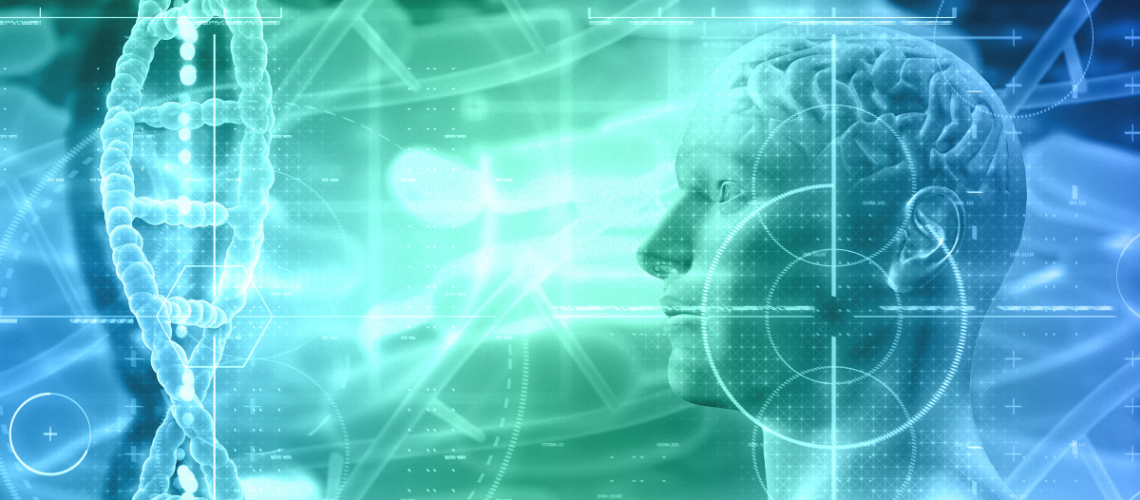What is Parkinson's Disease?
Parkinson’s Disease, also known as PD, is a progressive neurodegenerative disorder that affects predominately dopamine-producing (“dopaminergic”) neurons in a specific area of the brain called substantia nigra. In simple terms, Parkinson’s Disease is a nervous system disorder that affects movement. PD is considered a diverse disorder that develops slowly over time and is different for everyone – no two people experience PD in the same way. Approximately 60,000 Americans are diagnosed with PD each year and over 10 million people worldwide are living with it.
What are the Causes of Parkinson's Disease?
Although the cause of Parkinson’s Disease is unknown, it is believed to be a combination of genetics, environmental factors and lifestyle choices that collectively determine whether someone will develop PD or not. With PD, certain nerve cells, known as neurons, in the brain gradually break down or die. Many of the symptoms of PD are due to a loss of neurons that produce dopamine, a chemical messenger in your brain. When dopamine levels decrease, it causes abnormal brain activity, leading to impaired movement and other symptoms of PD.
Genetic Causes
According to experts, genetics cause roughly 10 to 15 percent of all PD. Researchers have found over the years specific genetic mutations that can cause PD. These mutations are uncommon except in the few cases where multiple family members are affected by PD and therefore carry the same genetic mutation. These genetic mutations are inherited or passed down from generation to generation.
Over the years, scientists have discovered dozens of gene mutations that are linked to Parkinson’s Disease; however, if someone has one of these gene mutations the probability of developing PD is low.
Environmental Causes
Environmental causes of Parkinson’s Disease include such things as:
- Traumatic Head Injury
- Area of Residence
- Occupation
- Exposure to Metals
- Solvents & Polychlorinated Biphenyls (PCBs)
- Pesticide and Herbicide Exposure
- Age
- Gender
Through years of research, scientists have also found that there are certain factors that may reduce the risk of developing Parkinson’s Disease such as:
- Caffeine
- Uric Acid or Urate
- Anti-inflammatory Drugs
- Smoking
- Cholesterol Levels
- Vitamin D
- Exercise
What are the Symptoms of Parkinson's Disease?
There are both movement and non-movement symptoms of Parkinson’s Disease to be aware of. PD symptoms usually begin gradually and get worse over time. The rate at which the symptoms progress differs among everyone diagnosed with PD.
Movement Symptoms
Parkinson’s Disease movement symptoms include:
- Bradykinesia (Slowness of Movement)
- Dizziness or Fainting
- Drooling
- Dyskinesia
- Dystonia
- Facial Masking
- Postural Instability (Trouble with Balance & Falls)
- Rigidity (Stiffness)
- Stooped Posture
- Tremor
- Trouble Moving or Walking
Of the movement symptoms listed above, there are three (3) that are significant symptoms that help doctors make a PD diagnosis. The three (3) symptoms are Bradykinesia, tremor and rigidity.
Bradykinesia
Bradykinesia is defined as slowness of movement and is one of the symptoms that must be present to be diagnosed with Parkinson’s Disease. There are various ways in which individuals will experience slowness of movement. Someone diagnosed with PD may experience a reduction of automatic movements which are things like blinking. They may have trouble initiating movements like getting up out of a chair. They may experience general slowness in physical actions, or they could have abnormal stillness or a decrease in facial expression.
Tremor
A tremor, also defined as shaking, usually begins in a limb, often your hand or fingers. Those diagnosed with Parkinson’s Disease typically experience a resting tremor which means the shaking occurs mostly at rest and lessens during sleep and when the body part is actively in use. In most cases, PD patients experience the tremor in their hands, but tremors can also appear in other parts of their body, including their lower lip, jaw or leg. As the disease progresses the tremor, that typically only affects one side of the body, can progress to both sides.
Rigidity
Rigidity is defined as stiffness or tightness in limbs. Rigidity can occur on one or both sides of the body and can contribute to a decreased range of motion. This decrease in motion can lead to problems with achiness or pain in the muscles or joints affected.
To be diagnosed with Parkinson’s Disease, Bradykinesia plus either tremor or rigidity must be present.
Non-Movement Symptoms
Although Parkinson’s Disease is a neurological movement disorder, most individuals diagnosed with PD will also experience other health problems not related to movement. Some of these “other health” problems also labeled as non-movement symptoms include:
- Anxiety
- Apathy
- Breathing & Respiratory Difficulties
- Cognitive Changes
- Constipation & Nausea
- Dementia
- Depression
- Fatigue
- Hallucinations/Delusions
- Loss of Smell
- Pain
- Skeletal & Bone Health
- Skin Changes
- Sleep Disorders
- Small Handwriting
- Speech & Swallowing Problems
- Urinary Incontinence
- Vertigo and Dizziness
- Vision Changes
- Weight Management
What are the Stages of Parkinson's Disease?
There are various ways in which doctors describe the stages of Parkinson’s Disease. The Parkinson’s Foundation separates PD into five (5) stages. These stages correspond to both the severity of the movement symptoms and how much PD is affecting a person’s daily activities.
Stage One (1)
In Stage One of PD, symptoms are mild and typically do not interfere with daily activities. During this stage tremors and other movement symptoms begin on only one side of the body.
Stage Two (2)
In Stage Two of PD, symptoms start to get worse and tremors and other movement symptoms such as rigidity start affecting both sides of the body. Daily tasks take longer and are more challenging to complete.
Stage Three (3)
In Stage Three of PD, also known as the mid-stage, loss of balance and slowness of movements are the most common symptoms. Individuals with PD that advance to this stage fall more often, and dressing and eating become very difficult. They are still independent, but daily life is progressively getting more challenging.
Stage Four (4)
In Stage Four of PD the symptoms are severe and very limiting. Individuals with PD at this stage can stand on their own, but most likely require a walker to move anywhere. At this stage individuals with PD are no longer able to live alone.
Stage Five (5)
In Stage Five of PD the disease is the most advanced and the symptoms are debilitating. Individuals with PD who have advanced to this final stage are unable to walk and require a wheelchair or are bedridden. In addition, they require 24/7 care.
Is there a Cure for Parkinson's Disease?
There is no cure for Parkinson’s Disease; however, there are a variety of things that can assist with relieving symptoms. Treatment includes such things as
- Prescription Medications
- Physical Therapy
- Occupational Therapy
- Surgical Options
- Medical Marijuana
- Over the Counter & Complementary Therapies
- Exercise
- Clinical Trials
It is important to note that there is no standard treatment for Parkinson’s Disease and treatment is different for everyone based on their symptoms.
Treating Parkinson's Disease at Roseman Medical Group
At Roseman Medical Group (RMG), the clinical practice of Roseman University’s College of Medicine, our neurologists provide empathic, patient-centered, evidence-based care. If you have a friend or family member who suffers from Parkinson’s Disease, let RMG’s expert neurologists help! Contact us today!


